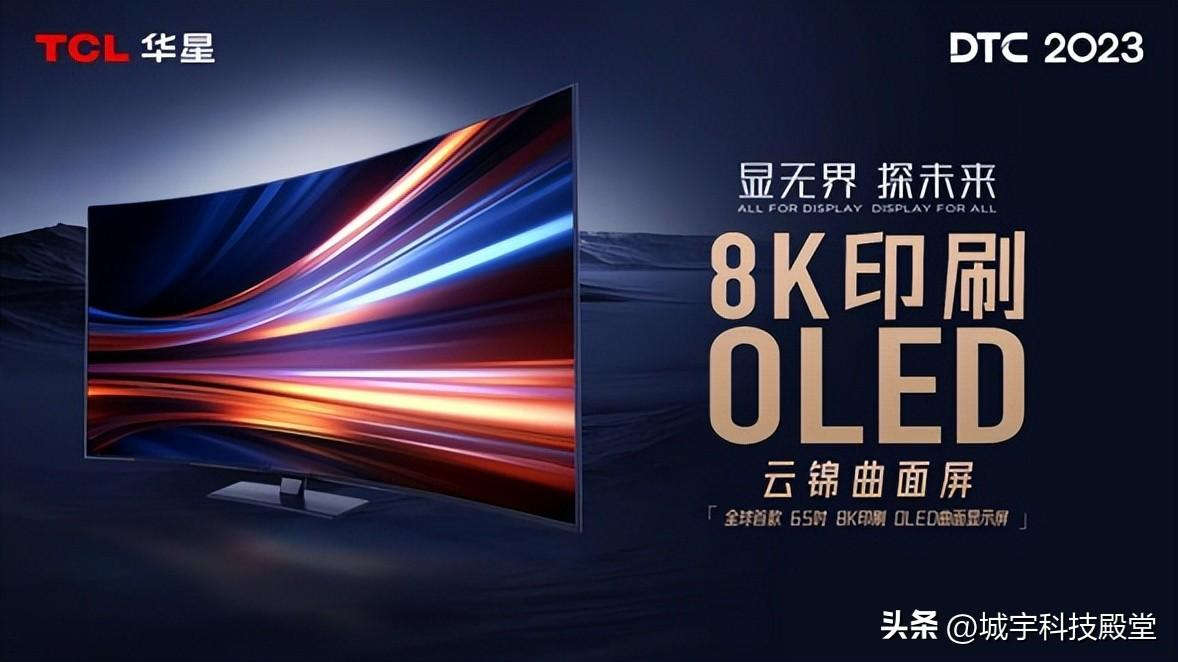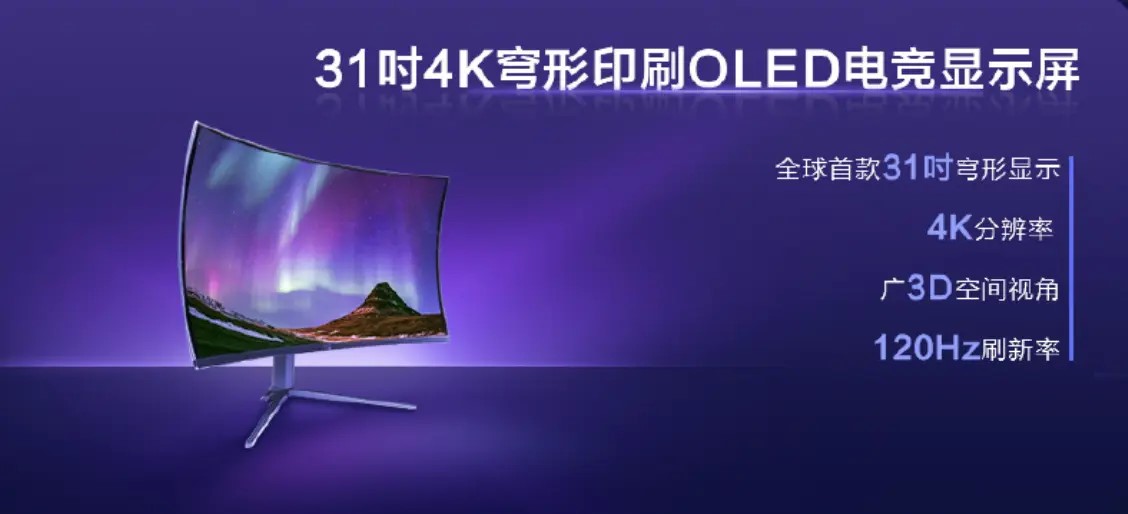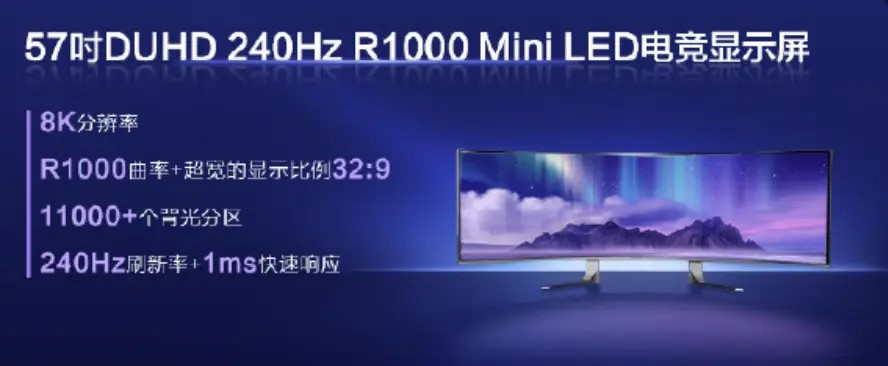TCL intros dome-shaped monitors for simulator gaming, teases new X-Intelligence AI model for displays that 'exceeds ChatGPT 4'
TCL's new monitor is purpose-made for specific use cases.

TCL showcased a new range of monitors during DTC 2023 held in Wuhan, China, that cater to specific types of users requiring different form factors. TLC teased its 'X-Intelligence,' what it calls 'the world's first AI model in the display industry,' saying the monitor is made for natural language processing and knowledge reasoning capability surpassing GPT-4.
The new models also include a new dome-shaped 31-inch OLED monitor with a 4K resolution and 120Hz refresh rate that's designed to bring the dome-shaped monitor experience to the standard monitor monitor. TCL also has a 57" 8K DUHD (7680 x 2160) ultra-wide mini-LED monitor with a 32:9 aspect ratio, 1,000R curved radius, and a 240Hz refresh rate.
While companies sometimes show concept prototypes if there's something new, these TCL monitors seem ready for retail.

The first monitor that grabs the attention is the 31-inch dome-shaped OLED monitor with 4K resolution, 120Hz refresh rate, and wide 3D spatial viewing angles. Unlike normal curved and flat monitors, domed-shaped displays are usually made as large screens for simulators.
This is a more home-friendly size, emulating that dome-shaped experience for playing racing and flight simulators, so it may appeal to those users. Using these monitors for gaming and content creation/general workloads would be interesting.


For ultra-wide display enthusiasts, the 57" 8K DUHD (7680 x 2160) mini LED monitor has a 32:9 aspect ratio with a 1,000R curved radius and a 240Hz refresh rate. Tom's Hardware got a good look at a DUHD 57" Samsung Odyssey Neo G95NC a few months ago, which uses a VA panel with mini LED. TCL has a pre-order with a December 25 ship date and a price tag of $3,199. It's also mildly amusing to see Samsung display user reviews for a pre-order item that hasn't shipped out yet.
TCL also has a standard aspect ratio 65" 8K 120Hz IJP-OLED monitor with a 120Hz refresh rate and DCI-P3 color gamut. IJP-OLED technology increases luminescent materials by two times to 90% while reducing blue light radiation by 50%. It is also meant to be a more flexible panel, which TCL has been perfecting for a while.
Get Tom's Hardware's best news and in-depth reviews, straight to your inbox.
TCL is also taking a shot with an autostereoscopic (glass-free) monitor with a 27-inch 4K display with 2D/ 3D switchability, but not much is mentioned beyond those bare specs. We're curious to see how glasses-free 3D works since it does seem to have an integrated doohickey above the monitor. However, the time for 3D monitors passed with little to no attention, and VR headsets are preferable for immersive and interactive experiences. Having the option to switch between 3D and 2D might have been attractive once upon a time, but many companies simply gave up on it due to a lack of consumer interest — like Nvidia 3D Vision, which was discontinued in April 2019. The lack of interest in this tech extends to both monitors and TVs.
AI in Monitors?
The company mentioned 'X-Intelligence,' what it calls 'the world's first AI model in the display industry,' saying the monitor is made for natural language processing and knowledge reasoning capability surpassing GPT-4. These AI monitors are likely made as a standalone display for specific industries rather than designed to be used as a monitor. Who knows, maybe it will be integrated into smart TVs in the future. in either case, AI is the buzzword for this year and next, and monitor vendors are beginning to hop on the marketing bandwagon.
These monitors would likely help TCL gauge interest among users, but it is unknown if these will sell in the international market. DUHD seems promising, but we're curious whether dome-shaped monitors have a market in the PC enthusiast space. Only time will tell.
TCL does sell its monitors and TVs in many countries, including in the United States. So, these will likely appear during CES 2024 as it can gauge consumer response.

Roshan Ashraf Shaikh has been in the Indian PC hardware community since the early 2000s and has been building PCs, contributing to many Indian tech forums, & blogs. He operated Hardware BBQ for 11 years and wrote news for eTeknix & TweakTown before joining Tom's Hardware team. Besides tech, he is interested in fighting games, movies, anime, and mechanical watches.
-
Order 66 8K 240hz?! good god, What kind of monster GPU are you going to need to run that? An RTX 9090? The 4090 can run 8k at about 30 fps (native) That is 1/8th the performance needed to max out that monitor.Reply -
helper800 Reply
The 4090 can actually do 8k60hz via Display port DSC. The 7900 XT and XTX both support 8k 240hz display output because they have DisplayPort 2.1 ports, whereas none of the 4000 series cards do, to the best of my knowledge. DisplayPort 2.1 can even do 16k60hz, something that does not exist yet with DSC.Order 66 said:8K 240hz?! good god, What kind of monster GPU are you going to need to run that? An RTX 9090? The 4090 can run 8k at about 30 fps (native) That is 1/8th the performance needed to max out that monitor. -
bit_user Reply
Maybe the simulators they're designed for are fairly simple.Order 66 said:8K 240hz?! good god, What kind of monster GPU are you going to need to run that?
When I upgraded the monitor on my work PC, I tested some old Linux OpenGL games, just to see what kinds of fps the GTX 1050 Ti could push @ 4k. Literally hundreds was the answer! I forget the details, but good 'ol Tux Racer ran at several hundred fps!
Battle simulators might also use older code that's heavily-optimized to run on simpler hardware. -
bit_user ReplyTLC teased its 'X-Intelligence,' what it calls 'the world's first AI model in the display industry,' saying the monitor is made for natural language processing and knowledge reasoning capability surpassing GPT-4.
Ugh. We all should have enough of a sense of the hardware requirements to run GPT-4 that your monitor obviously isn't going to be packing anything remotely close to the compute power & memory needed for it.
I'm guessing it might be some kind of cloud service tie-in. For now, I'd just ignore this part.